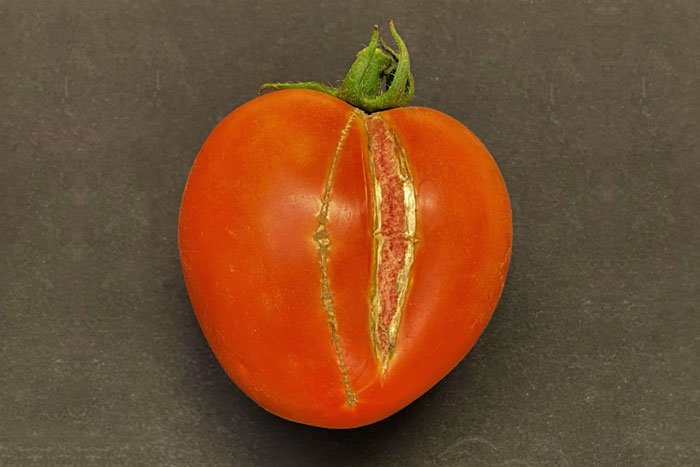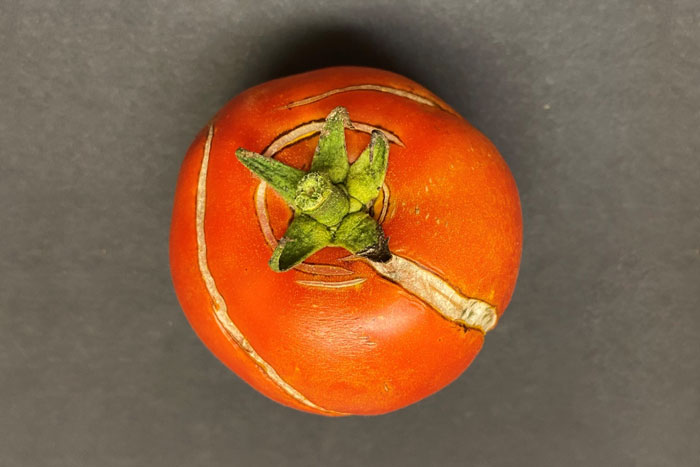Taking an environmentally sensitive approach to pest management
Conditions are Ripe for Tomato Fruit Cracking
Published: September 2, 2021
Cracking or splitting of tomato fruits is a common problem when there are widely fluctuating soil moisture conditions, especially during the hot, dry days of late summer. Excessive irrigation or heavy rainfall following a droughty period results in a rapid uptake of water in plants, causing ripening fruit to split vertically or crack concentrically (Figure 1). Tomatoes exposed to direct sun tend to absorb more heat during the daylight hours than shaded fruit and are also prone to splitting. Also, tomatoes left on vines too long often develop concentric cracks at the stem end of the fruit (Figure 2).

Figure 1 A vertical split in a Mountain Merit tomato that occurred when heavy rainfall occurred after a droughty period with dry soil conditions.

Figure 2 Concentric cracking on a Primo Red tomato left on the vine too long before harvest.
For many horticultural problems, a common solution is to select a resistant cultivar. Several cultivars have been developed for crack resistance. However, all tomato cultivars, including cherry, plum, and conventional types are prone to this disorder when dry soil conditions are followed by abundant moisture.
Several cultural practices can be used to minimize tomato cracking. A consistent supply of moisture to plants by hand watering or irrigating with soaker hoses or drip irrigation tape can be helpful. Also, mulching the garden area with straw, compost, or other material will conserve soil moisture. Maintain optimum plant fertility by applying calcium nitrate and other nutrients, especially during flowering and fruiting. Excessive nitrogen or low calcium and/or potassium predispose the tomatoes to cracking.
When rain is expected after a droughty period, harvest any nearly-ripe tomatoes. Although fruit may not be quite as flavorful as a fully, vine-ripened tomato, they will still be usable. After the rainfall, check plants for any fruit that may have cracked. Harvest any cracked or split fruit immediately and use it quickly before the development of rot. Discard any sour-smelling or diseased or rotted portions of the fruit.
Subscribe to receive similar articles sent directly to your inbox!
- Tomato Production: Ten Common Questions (08/07/23)
- Col. Johnson's Dramatic Demonstration (04/24/23)
- Tomato Fruit Disorders (07/20/22)
REVISED: September 2, 2021